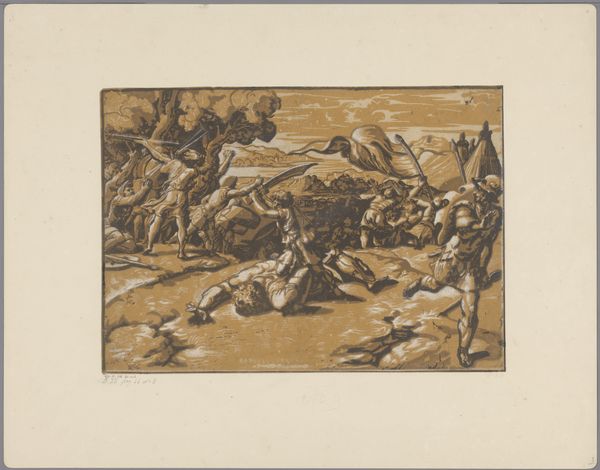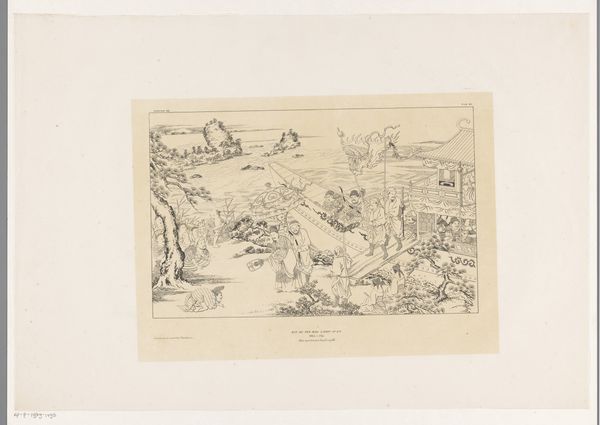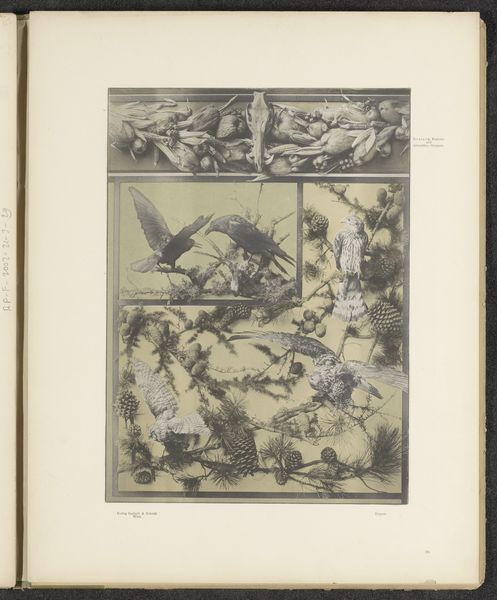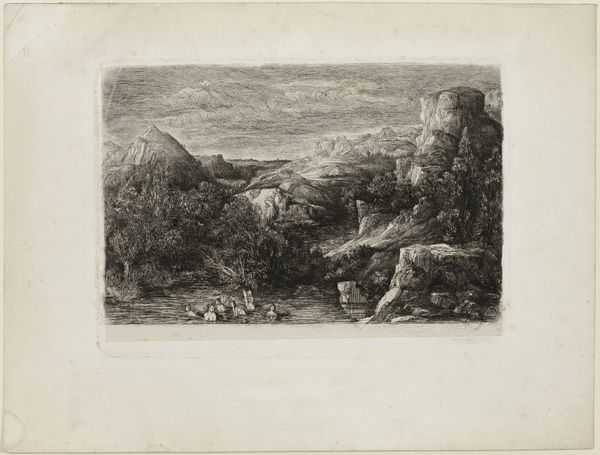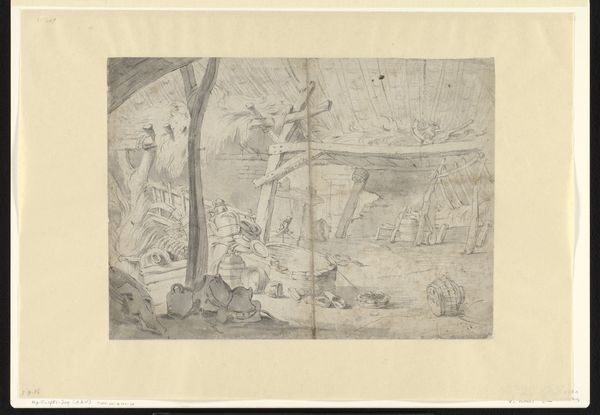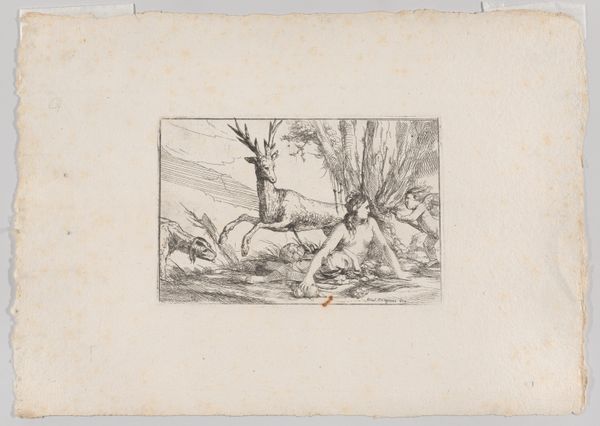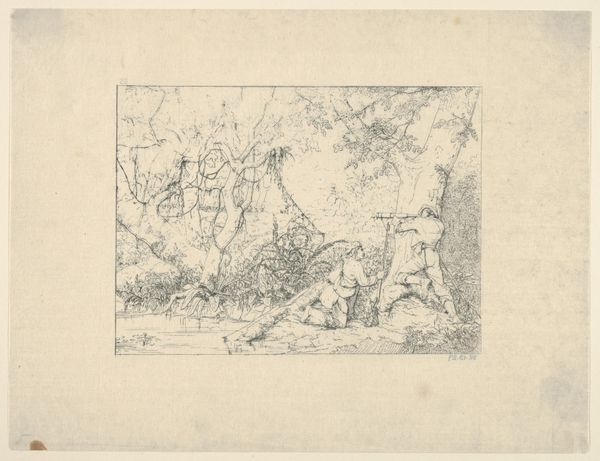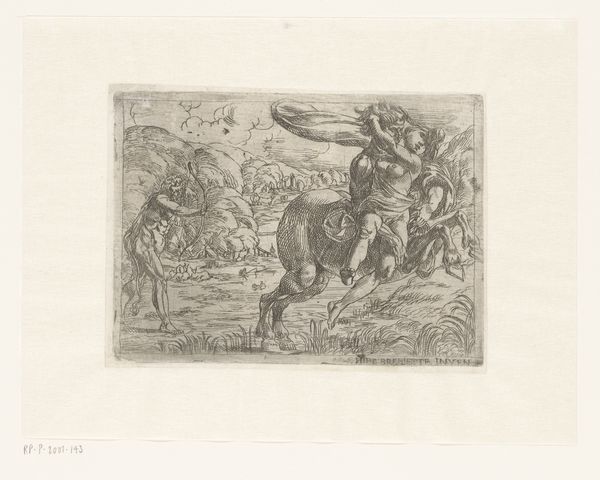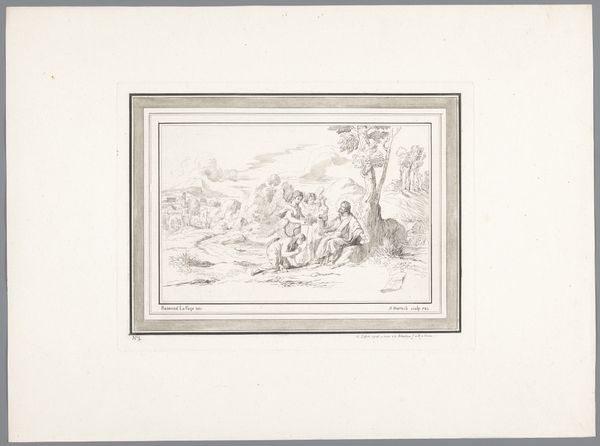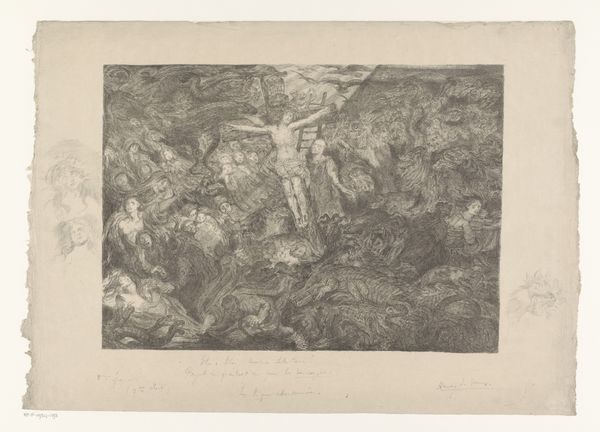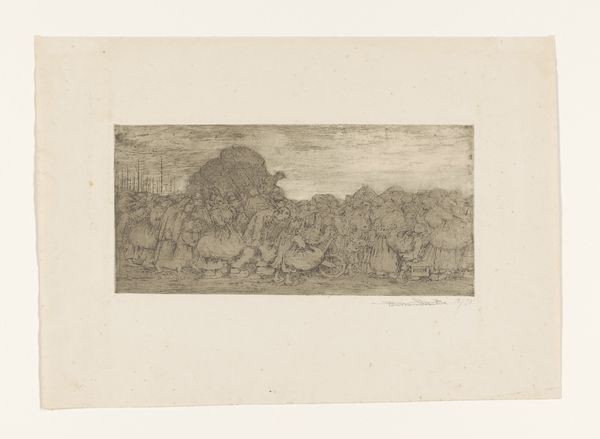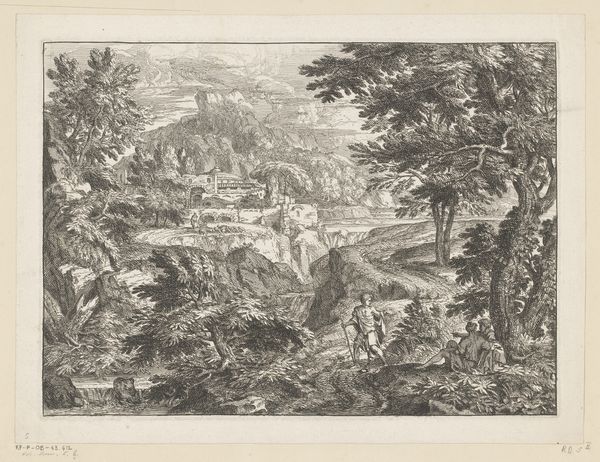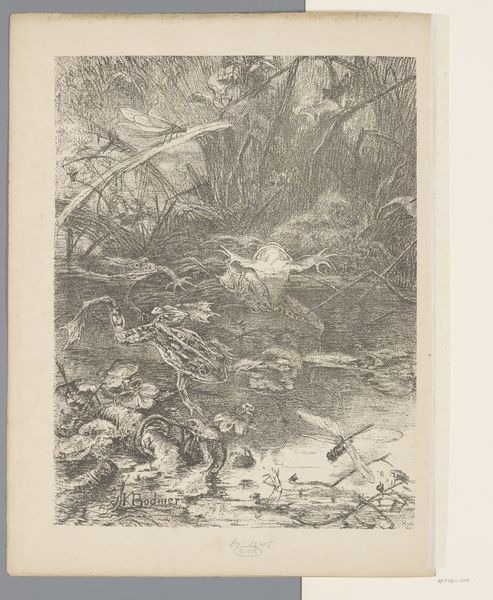
drawing, ink
#
drawing
#
figuration
#
11_renaissance
#
ink
#
history-painting
#
italian-renaissance
Dimensions: height 263 mm, width 388 mm
Copyright: Rijks Museum: Open Domain
Editor: This drawing, “David onthoofdt Goliat,” from somewhere between 1502 and 1532, is attributed to Ugo da Carpi. It’s done in ink, and the scene is pretty intense – David is triumphantly standing over Goliath’s body, and soldiers are actively warring around them. It's...violent. How do you interpret this work in the context of its time? Curator: Violence is definitely present, but I think it's more than just gore. How do you see the relationship between David's victory and the socio-political dynamics of the Italian Renaissance? Consider the narrative. Here we have a young, smaller figure defeating a giant. What kind of power structures does this challenge? Editor: Well, I guess it suggests the underdog can overthrow established authority, no matter how powerful. But isn't that reading into it a little much? It's just a Bible story, right? Curator: And Bible stories are always neutral? Think about how religion was often used to legitimize power, but also how figures like David could be symbols of resistance against tyranny. It’s useful to investigate the dynamics between faith, political authority, and social change when exploring the artist’s narrative intention. Could the artist subtly be commenting on power imbalances through this biblical allegory? Editor: I see what you mean. The drawing style makes it seem so classic, like an affirmation of the Church's history... but you are right, that might be just on the surface. It also speaks to courage and change. Curator: Exactly. These images can reinforce prevailing ideologies and open avenues for subtle dissent. Considering all these factors enriches our understanding of the artwork’s place in the larger cultural discourse. Editor: That makes me consider who was commissioning this and what that meant for the image's message. I appreciate seeing how we can unearth the art’s multilayered meanings. Thanks!
Comments
No comments
Be the first to comment and join the conversation on the ultimate creative platform.
